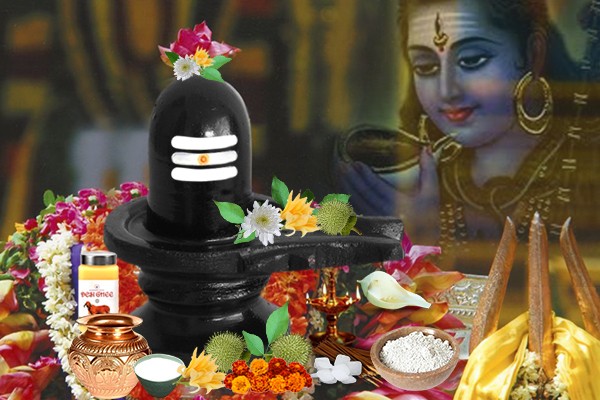SHIVA ABHISHEKAM - POURING MILK, GHEE AND HONEY ON SHIVALINGA

According to Hindu mythology, as outlined in ‘The Sacred Literature of Shaivism’ – Shiva Agamas, worship of Lord Shiva commences with Abhishekam. Abhishekam is a Sanskrit word which means sprinkling. It has been derived from the root ‘sic’ which means ‘to wet’ and the prefix ‘Abhi’ which means ‘around.’ Abhishekam ritual involves bathing the Shiva Linga with water, milk, honey, and other edible ingredients. Initiating Lord Shiva’s puja with Abhishekam is believed to heighten the efficacy of the ritual. The Abhishekam involves the use of various substances such as milk, curds, honey, ghee, sugar, coconut water, holy ash, sandal paste, and among others.
Furthermore, according to the legends, Lord Shiva once consumed a potent poison called Halahal, resulting in an intense rise in his body temperature. To soothe this burning sensation, various substances such as milk, ghee, honey, curd, and water were applied to his divine form. Since that incident, the tradition of offering water/ milk/honey/ghee/sugar on the Shivling has endured. Devotees believe that milk is beloved to Lord Shiva, and by bathing the Shivling with milk during the auspicious month of Sawan, their heartfelt wishes are fulfilled. Moreover, different substances possess the capability to emit distinct vibrations upon contact with an energized object or deity. Many of these substances are edible, with each one harboring a unique quality that either heals or invigorates a specific body part.
Furthermore, according to the legends, Lord Shiva once consumed a potent poison called Halahal, resulting in an intense rise in his body temperature.To soothe this burning sensation, various substances such as milk, ghee, honey, curd, and water were applied to his divine form. Since that incident, the tradition of offering water/ milk/honey/ghee/sugar on the Shivling has endured. Devotees believe that milk is beloved to Lord Shiva, and by bathing the Shivling with milk during the auspicious month of Sawan, their heartfelt wishes are fulfilled. Moreover, different substances possess the capability to emit distinct vibrations upon contact with an energized object or deity. Many of these substances are edible, with each one harboring a unique quality that either heals or invigorates a specific body part.
Likewise, incorporating milk after the pouring of holy water is believed to nurture and enrich the mind and soul with virtues such as goodness, compassion, noble thoughts, and a sattvik mindset. Performing Abhishekam correctly is thought to assist in the purification of all negative karmas accumulated over past lives. Mythology suggests that pouring milk and water over the Shivalinga can bring happiness and prosperity, which is why millions of devotees seek the blessings of Lord Shiva by offering milk, water, ghee, and honey. Finally, worshipping the deity with honey is said to bring sweetness to one’s voice and thoughts.
Moreover, the scientific rationale behind these traditions is as follows: Preservation of Shivling: The Shivling is crafted from a distinct type of stone prized for its smoothness and coolness. To shield this sacred stone from erosion, it is customary to anoint it with substances like milk, ghee, and honey. These smooth and cool materials create a protective layer on the Shivling, mitigating erosion induced by external factors such as temperature variations and atmospheric conditions.
Nourishment and Durability: The Shivling stone possesses a fascinating property of absorbing the substances poured on it. When milk or other offerings are anointed on the Shivling, the stone absorbs these liquids, akin to nourishment. This absorption process contributes to maintaining the structural integrity of the Shivling over an extended period. If oily or fatty materials are not offered, the stone may become brittle and prone to breakage. However, by keeping the Shivling moist with offerings, it remains intact for thousands of years. Balancing Quantity and Timing: During the ritual of offering milk, ghee, honey, or curd on the Shivling, it is essential to maintain appropriate quantities and adhere to specific timings. Excessive pouring of these substances or rubbing the Shivling with hands can result in erosion and damage. Therefore, the tradition of performing Abhishek, especially on Mondays and during the month of Shravan, ensures that the offerings are made in moderation, thus preserving the sanctity of the Shivling.
